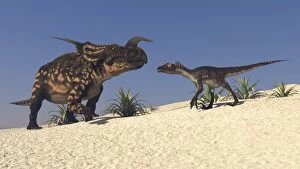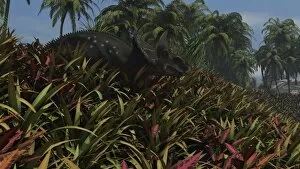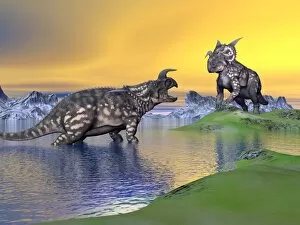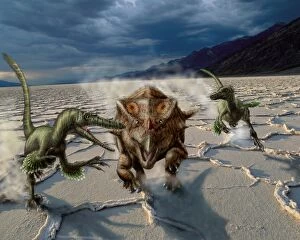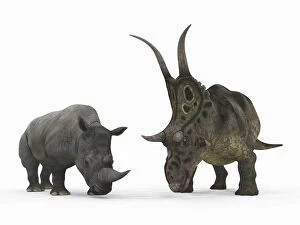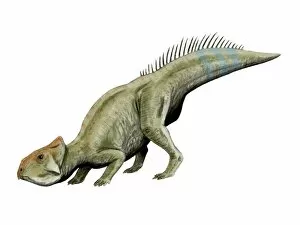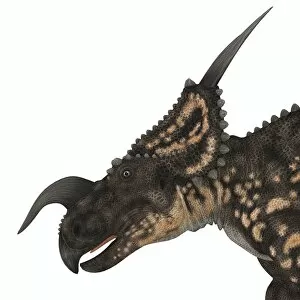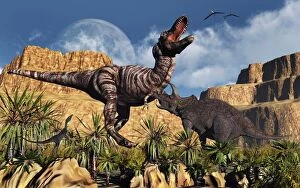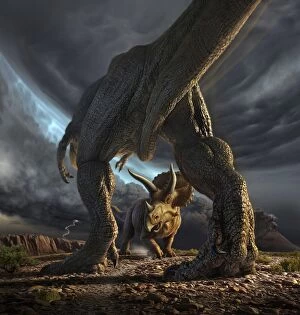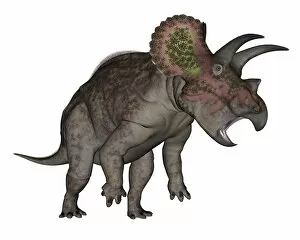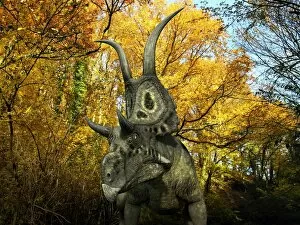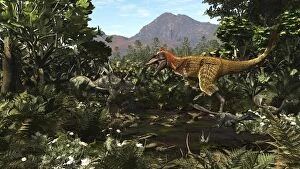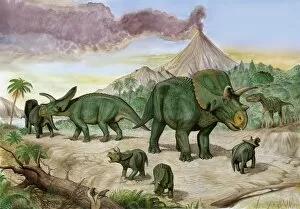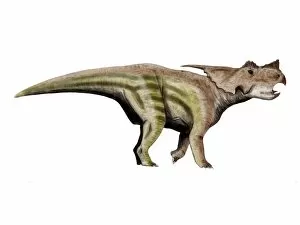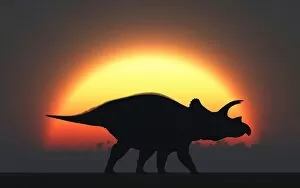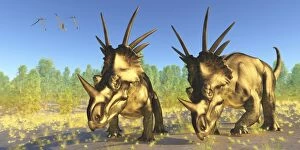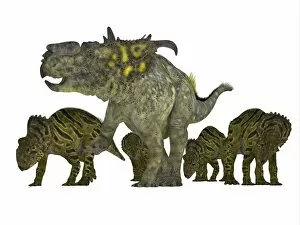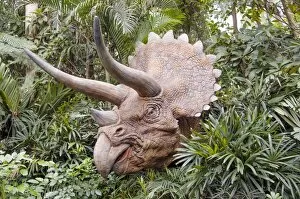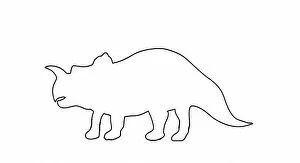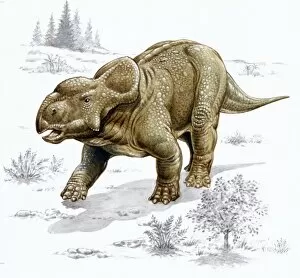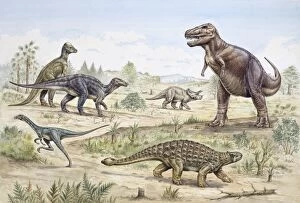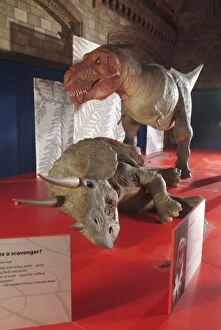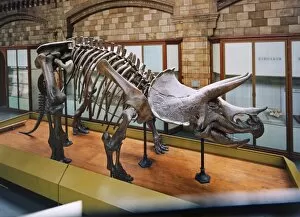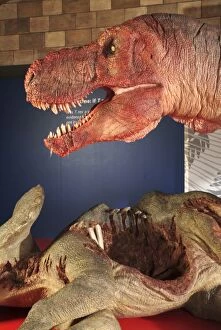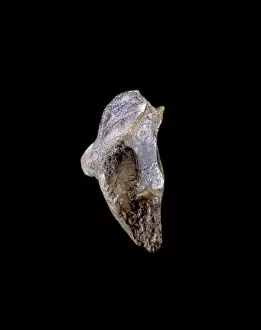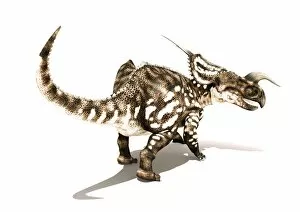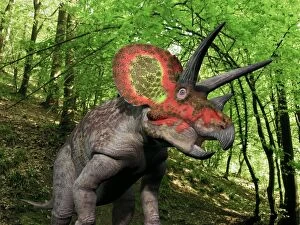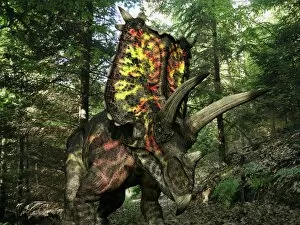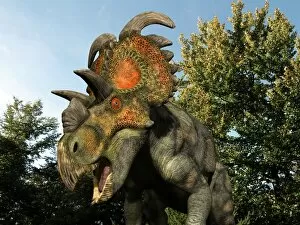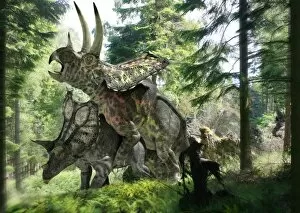Ceratopsid Collection (#8)
"Ceratopsids: Majestic Horned Dinosaurs of the Prehistoric World" Step into the ancient world where ceratopsids roamed
For sale as Licensed Images
Choose your image, Select your licence and Download the media
"Ceratopsids: Majestic Horned Dinosaurs of the Prehistoric World" Step into the ancient world where ceratopsids roamed, ruling the land with their impressive horns and sturdy frames. Among them, the mighty Triceratops stood tall, its three-horned face a formidable defense against predators. Witness as a Tyrannosaurus Rex feasts on the carrion of a fallen Triceratops, showcasing nature's circle of life. In this prehistoric environment, another fascinating species emerges - Rubeosaurus. With its unique features and distinct frill patterns, it adds diversity to an already mesmerizing landscape. As you explore further, you stumble upon a herd of dinosaurs passing by an enigmatic sight - a flying saucer lodged into the ground. What secrets does it hold? Only time can tell. Delve deeper into history as you encounter Triceratop dinosaur skeleton C016 / 5928; its bones whisper tales from eons ago. Admire the chromolithograph published in 1900 capturing Triceratops prorsus in all its glory – truly a testament to our fascination with these magnificent creatures. But ceratopsids were not limited to just one genus; Torosaurus latus and Monoclonius also graced Earth before their extinction. Their presence reminds us of how diverse and vibrant our planet once was during those ancient times. Imagine standing amidst Styracosaurus dinosaurs during Earth's Cretaceous period – their elaborate frills and menacing spikes creating an awe-inspiring spectacle. Inevitably, they confront none other than the iconic Tyrannosaurus Rex itself – two titans locked in an epic battle for survival. Ceratopsids have left an indelible mark on our understanding of Earth's past. Through fossils like Triceratop horn or Marsh's extinct genus Triceratops prorsus, we continue to unravel the mysteries of these magnificent creatures.

